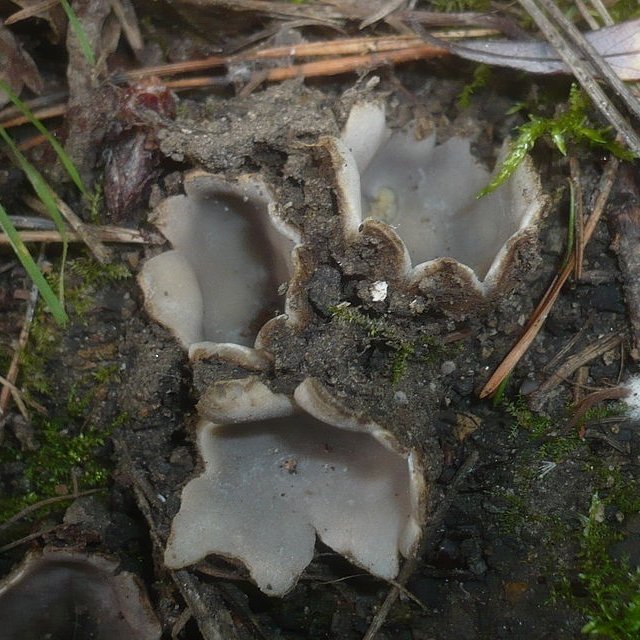Geopora pine (Geopora arenicola)
- Department: Ascomycota (Ascomycetes)
- Subdivision: Pezizomycotina (Pezizomycotins)
- Class: Pezizomycetes (Pezizomycetes)
- Subclass: Pezizomycetidae (Pezizomycetes)
- Order: Pezizales (Pezizales)
- Family: Pyronemataceae (Pyronemic)
- Genus: Geopora (Geopora)
- Type: Geopora arenicola (Pine Geopora)
:
- sandstone burial
- Lachnea arenicola
- Peziza arenicola
- Sarcoscypha arenicola
- Lachnea arenicola

Like many geopores, Geopora pine (Geopora arenicola) spends most of its life underground, where fruiting bodies are formed. Distributed in the southern regions, the growth and maturation of the fruiting body falls on the winter period. It is considered a rather unusual European mushroom.
Fruit body small, 1-3, rarely up to 5 centimeters in diameter. At the stage of maturation, under the ground – spherical. When ripe, it comes to the surface, a hole with torn edges appears in the upper part, resembling a small insect mink. Then it breaks in the form of an irregularly shaped star, while remaining voluminous, and does not flatten to a saucer shape.
Inner surface light, light cream, cream or yellowish gray.
Outside surface much darker, brownish, covered with hairs and grains of sand adhering to them. The hairs are thick-walled, brown, with bridges.
Leg: missing.
Pulp: light, whitish or grayish, brittle, without much taste and smell.
The hymenium is located on the inside of the fruiting body.
Bags 8-spore, cylindrical. Spores are ellipsoid, 23-35*14-18 microns, with one or two drops of oil.
It grows in pine forests, on sandy soils, in mosses and in crevices, in groups, in January-February (Crimea).
Inedible.
It looks like a smaller sandy Geopore, from which it differs in larger spores.
It is also similar to similarly colored pezits, from which it differs in having a hairy outer surface and a torn, “star-shaped” edge, while in pezits the edge is relatively even or wavy.
When the edges of the geopores of an adult fruiting body begin to turn outwards, from a distance the mushroom can be mistaken for a small representative of the Star family, but upon closer examination everything will fall into place.









